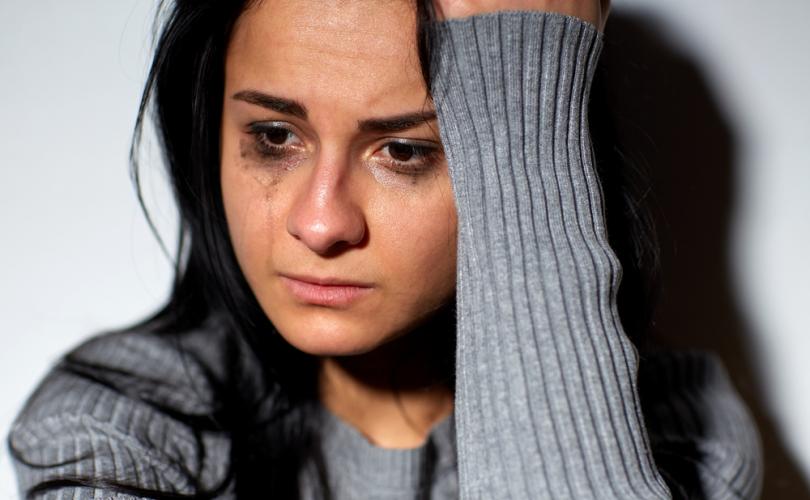Blog Post
Porn use hasn’t decreased sexual violence. It has normalized sexual violence.
By Jonathon Van Maren
November 23, 2018 (LifeSiteNews) – A long-form article in the most recent issue of Politico has been attracting a lot of discussion in conservative circles over the past several weeks. Titled “How the GOP Gave Up on Porn,” journalist Tim Allen posits the thesis that conservatives—or at least, conservative politicians—have essentially accepted digital pornography as an unfortunate but permanent part of our cultural landscape.
The defeatism of this perspective aside (I responded to Allen’s long-form column with my own analysis), some conservatives are beginning to put forward the thesis that perhaps many of the dire predictions about pornography leading to social chaos were overblown—or at least, that pornography has instead contributed far more to a dearth in sexual activity (as posited recently by Kate Julian in The Atlantic) and erectile dysfunction rather than the uglier consequences previous generations warned about.
Ross Douthat put forward this view in the New York Times earlier this week, noting that this sexual recession runs contrary to the predictions of many conservatives, who had warned of “a pornography-abetted spike in rape and sexual violence” among other things. It appears, Douthat writes, that conservatives may have been wrong:
But many of those grim social trends stabilized or turned around in the 1990s, and instead of turning teenage boys into rapists, the internet-enabled victory of pornographic culture had, perhaps, the opposite effect. Rates of rape and sexual violence actually fell with the spread of internet access, suggesting that the pleasures of the online realm were either a kind of substitute for sexual predation, a kind of sexual tranquilizer, or both. And that tranquilizing effect seems to extend beyond predation to the normal pursuit of sexual relationships, because some combination of Netflix, Tinder, Instagram and masturbation is crucial to the decline-of-sex story that Julian’s Atlantic essay tells.
Douthat makes several interesting points here (as well as in the rest of his column), but I’d like to take a moment to address the one key mistake he and many others have been making with regard to the connections between pornography and sexual violence. Because rape and sexual violence rates have been falling, at least in terms of recorded crime statistics, the thesis goes, and that this decline has happened alongside an explosion of digital pornography so thorough that its use is nearly ubiquitous, this must mean that conservatives (and radical feminists like Andrea Dworkin and Gloria Steinem, among others) must have been wrong about the connection between porn and sexual violence.
I genuinely wish that were true, but Douthat and those who share his view are missing something important: Pornography has normalized sexual violence. It is true that almost nobody predicted that pornography would become a replacement for actual sex for many people, or that its use would lead to trends like rising rates of erectile dysfunction in men under thirty. But the connection between pornography and sexual violence not only exists, it is far more dangerous than anyone could have initially predicted. The ubiquity of pornography and the increasing prevalence of violent and degrading porn, as I’ve noted before, has given rise to a new ideology of sex. This cultural trend has been missed by many due to the fact that it does not appear in the crime rates generally utilized to determine how our society is doing in regard to sexual violence.
The fact is that the pornography has taught an entire generation how to view sex—and that the majority of that pornography contains explicitly violent and degrading content (88% of top-selling porn content contains violence against women, and the top-ranked online porn for teen boys includes scenes where women and girls are virtually destroyed in a single shoot by multiple men simultaneously). Combine that with the relentless promotion of sexual violence as legitimate in the romantic context—the Fifty Shades of Grey torture porn trilogy sold well over 100 million copies, and the Hollywood films became smash hits—and we have created a culture where whipping, hitting, cruel restraints, and the intentional infliction of pain on a romantic partner is considered normal. It used to be considered wrong for a man to hit a woman. Now, apparently, it is okay if she’s really asking for it.
In fact, the mainstreaming of sexual violence has gone so far that a new and insidious phrase is popping up every so often. When Jian Ghomeshi, the former CBC host, was hit by multiple accusations of striking, choking, and other sexually abusive behavior by multiple women, the Toronto Star announced that Ghomeshi had been accused of “unwanted sexual violence.” The implication was obvious: It is commonly accepted now that there is such a thing as wanted sexual violence, and thus these distinctions now need to be made. Ghomeshi promptly came out and described his sexually violent relationships as “consensual,” much like “Fifty Shades of Grey.”
Consider, for a moment, how fundamentally sick a culture has to be to accept “sadism” (the s in BDSM) as a normal part of romance and sexuality. But that is precisely where the ubiquity of pornography has taken us. A Durex survey found that 36% of adults in the US now incorporate BDSM into their sex lives, and the Fifty Shades of Grey craze saw interest in this sort of behavior spike dramatically: A 96.2% spike in interest in Phoenix, Arizona, according to one poll; 95% in San Francisco, 50.5% in Detroit, 40% in Tampa, 44.4% in Las Vegas, and so on.
Sexually violent pornography has not just transformed the sex lives of adults, it has also transformed the sexual landscape for the young. I often speak on pornography in high schools, and it is depressingly common to get questions from young teen girls about why the boys are requesting degrading and violent sexual favors; the answer, of course, is that these things are mainstream in porn. In the UK, doctors are describing having to regularly stitch up young girls because they are engaging in porn-inspired anal sex. One Australian sex educator described how porn had “transformed” high school for girls:
Seventh grade girls are asking questions about bondage and S&M. Many of them have seen 50 Shades of Grey, and wonder if a boy wants to hit me, tie me up and stalk me, does that mean he loves me? Girls are tolerating demeaning and disrespectful behaviors, and thereby internalizing pornography’s messages about their submissive role.
Girls describe being groped in the school yard, and being routinely sexually harassed at school or on the school bus on the way home. They are saying that boys act like they are entitled to girls’ bodies, like girls are only there to pleasure them. It is partially true what defenders of porn often say, porn does provide sex education—but not in the way they think. It teaches middle school boys that women and girls are there for his pleasure and that they are always up for sex. To them, no just means persuade me.
Vanity Fair journalist Nancy Jo Sales describes a very similar atmosphere in American high schools in her chilling 2016 book American Girls: Social Media and the Secret Lives of Teenagers. And a committee of British MPs just came out with a report highlighting an increase in sexual harassment a few days ago:
While provision of sex and relationships education still patchy, teenagers are understandably turning to pornography to learn about sex. However, with much of even mainstream porn featuring sexual aggression, coercion, and a lack of interest in female pleasure, young people are early on exposed to very stereotypical and degrading images of sexuality which can feed into their attitudes towards women and sex….Again, no one is suggesting that watching porn as a teenager turns you into a sexual predator. What is of concern, however, is that young people’s very normal and valid sexual curiosity is being fed by scenes of violence, simulated rape, and acts that centre on aggression and degradation, all before they’ve had a chance to explore and develop their own sexuality. This risks young people growing up to view women as the sex objects they are in porn, which in turn normalises sexual harassment. There is also evidence to suggest girls feel coerced by their boyfriends into sexual acts they don’t want to partake in, citing “pornography as the explanation” for being pressured into, for example, anal sex.
One of my friends who frequently mentors young women who have experienced such abuse described the impact of violent pornography on our culture this way: Many girls, when trying to explain what happened to them, actually have to ask: Was I raped? Because porn has normalized sexual violence, the lines between acceptable and unacceptable sexual behavior have been blurred to the point that many young people simply no longer know what is or is not assault. And because many young people learn about sexuality from porn, many of them believe that sexual violence is simply part of any relationship.
I could go on. The stories from high schools are countless, and the normalization of what was once considered to be sexually violent behavior by pornography has now been well-established by researchers. As Dr. John Foubert, the author of a sweeping meta-analysis on pornography titled Porn Harms, has pointed out, over fifty studies have now established a connection between porn and sexual violence—and the statistical chance that this connection does not exist is one in 88 decillion.
READ THE REST OF THIS COLUMN AT LIFESITENEWS.COM









This essay belongs in the New York Times — the place Douthat’s essay was published.